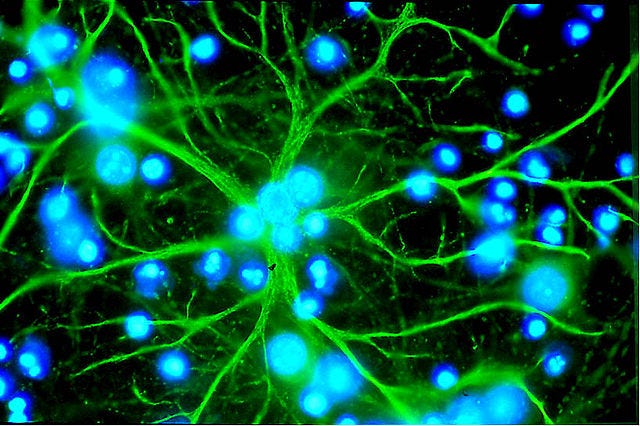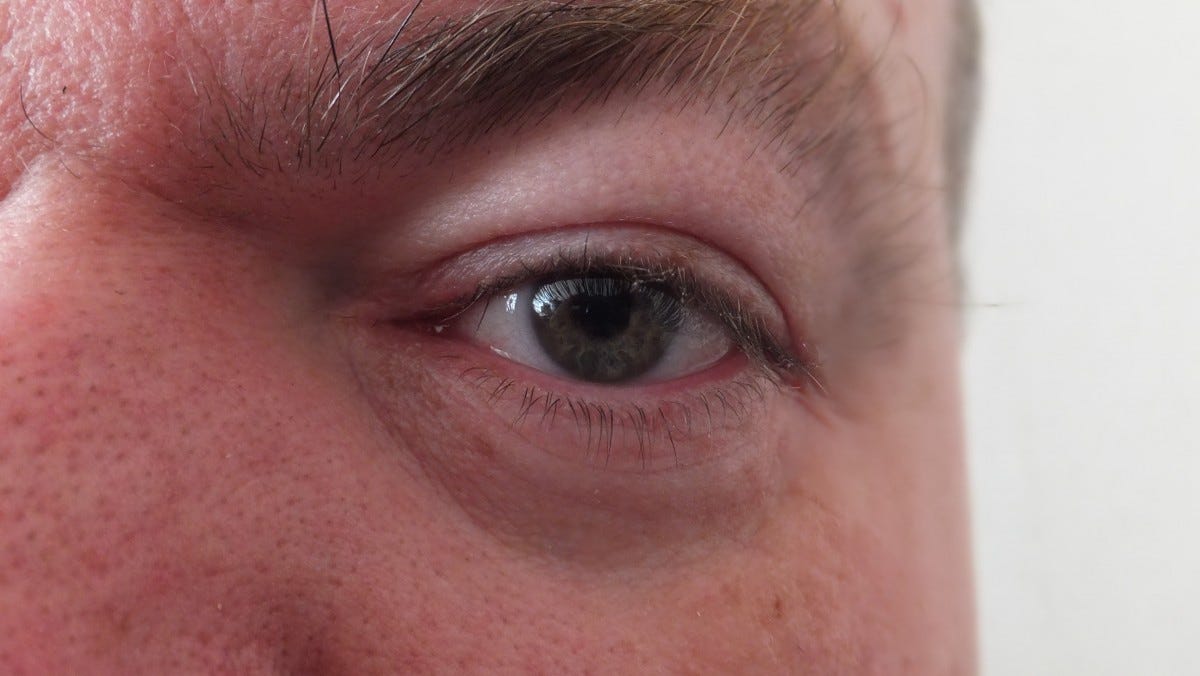Sci-Ed Update 326
Bonelike cement, overcoming vaccine hesitancy, why earlobes?, astrocytes become neurons?, good belly fat?!, face/eye transplant, brain remodels during pregnancy, embryo ethics, watching cell chemistry
Human embryo models are getting more realistic — raising ethical questions
Insights from embryo models could help to explain why about one-third of natural embryos don’t make it past their first weeks. This could help to address infertility, improve the success rate of in vitro fertilization and even prevent diseases that emerge early in development. Models could also be used to test the safety of drugs for embryos.
But as the models become increasingly complex, and reach symbolic milestones, such as the first heartbeat, they raise tricky ethical questions. Ethicists, regulators and legal specialists are scrambling to keep up with the pace of research.
Read more→ AandP.info/1dy
Back to School STEM with NOVA
On September 19 at 7PM ET, get the new school year started with free classroom-ready STEM resources from NOVA! In this webinar, we will highlight new PBS LearningMedia resources across science disciplines, explore the NOVA 50th anniversary premium collection, and preview the NOVA engineering series, Building Stuff, launching this fall.
We are excited to announce that neuroscientist and host of NOVA’s Your Brain series, Dr. Heather Berlin, will host a presentation and Q&A on everything a teacher should know about the adolescent brain during the webinar. There will also be a raffle for NOVA 50th anniversary swag bags for five teachers who attend the webinar. The webinar and the list of resources will be available to view on the GBH Education YouTube and Facebook channels.
Kevin Patton comment→ This event focuses on 6-12 educators, but I think there will be a lot of useful content and resources for those of us who focus on undergraduates.
Read more→ AandP.info/s1z
Red light, green light: flickering fluorophores reveal biochemistry in cells
Living cells teem with proteins. But those proteins rarely work alone; they drive cellular behaviour by pairing up with other proteins to form transient or long-lasting complexes.
…But studying protein complexes in cells has been challenging. Most techniques require cells to be broken open to obtain proteins to study in a test tube, or molecules to be labelled — but often the labels are too sparsely distributed to observe interactions reliably. In 2022, Graham and his colleagues in the laboratory of biochemist Robert Tjian at UC Berkeley described a way to capture
these interactions in live cells at the single-molecule level1. Called proximity-assisted photoactivation (PAPA), the method uses excitation of one fluorophore by green light to reactivate a nearby second fluorophore from a dark state. Most of the proteins that light up are in close proximity and so are likely to be in the same complex as the protein carrying the excited fluorophore. “PAPA, for the first time, lets us light up molecules that are interacting with a specific partner, and to look at those pairwise interactions within a cell,” says [biophysicist Thomas] Graham.…Graham says PAPA was discovered by accident during the COVID-19 lockdown.
Kevin Patton comment→ an interesting aside when helping students understand the complexity of cell function an interesting story about how science sometimes (often?) relies on accidental observations.
Read more→ AandP.info/itc
Evidence grows for dramatic brain remodelling during pregnancy
The human brain goes through significant changes during pregnancy with few regions untouched, according to the first ever map of this over the course of gestation and beyond.
Some regions of the brain shrink during this time, while others grow and become better connected. These changes are thought to enable mothers to develop strong bonds with their baby and adapt to the demanding task of caring for them. A better understanding of this remodelling could explain several pregnancy-related behaviours and help people at risk of mental health conditions, such as postnatal depression.
Read more→ AandP.info/4sr
The first face transplant to include an eye shows no rejection a year later
In May of 2023, Aaron James, an electrical lineman, had the first partial face transplant to include an eye. A year after the procedure, there haven’t been signs of rejection, and there is blood flow to the donated eye. But James cannot see out of the eye, a medical team from New York University Langone Health reported September 9 in the Journal of the American Medical Association. The nerve connections from the eye have withered.
A test that assesses the eye’s ability to react to light detected a small response, although this result does not mean sight will return, the medical team notes. James doesn’t have sensation in the eye’s surface and the eye’s lid remains closed. He will be on immunosuppression drugs for the rest of his life.
Read more→ AandP.info/58l
Regular exercise may lead to healthier belly fat, study finds
Belly fat tends to get a bad rap, but new research shows that one kind of belly fat can be healthier than others — provided you’re willing to get moving.
“Fat is really misunderstood,” said Jeffrey Horowitz, a professor of exercise physiology in the University of Michigan School of Kinesiology. “The fat we have, especially that which is stored under our skin, is a really important place to store our energy.”
In a new study published Tuesday in the journal Nature Metabolism, Horowitz and his team found that people with obesity who get regular aerobic exercise have healthier belly fat tissue — specifically, that subcutaneous fat stored just beneath the skin — than nonexercisers with obesity.
Kevin Patton comment→ Yay!
Read more→ AandP.info/vaa
How Astrocytes Can Become Nerve Cells

A new study reveals that astrocytes, a type of brain cell, can transform into nerve cells through changes in DNA methylation. Researchers discovered that astrocytes in certain brain regions have a unique methylation pattern, allowing them to generate nerve cells.
This process can be triggered by a lack of blood supply, such as in a stroke, which reprograms astrocytes to form new neurons. The findings could pave the way for new therapies that repair brain damage by stimulating the production of nerve cells.
Key Facts:
Astrocytes can transform into nerve cells via changes in DNA methylation.
Brain injuries or strokes trigger astrocytes to reprogram and form new neurons.
Future therapies may target this process to repair brain damage and treat nerve diseases.
Read more→ AandP.info/olo
Why do we have earlobes? They make no evolutionary sense.
These dangly bits of soft, non-cartilaginous tissue appear relatively recently in the animal record–they’re only really present in humans, chimpanzees, and gorillas,…says [Mark Coleman, an associate professor of anatomy at Western Atlantic University School of Medicine in The Bahamas]. So far, biologists haven’t identified any clear purpose for them. “I think their function is to have a safe place to put an earring,” he jokes.
Kevin Patton comment→ There’s much more in the article.
Read more→ AandP.info/nex
Study: Highlighting harms of not being vaccinated could overcome hesitancy
Key takeaways:
Participants counseled on the potential harms of not being vaccinated had the highest probability of getting vaccinated.
Loss was a more effective motivator than altruism.
Clinicians could help patients overcome vaccine hesitancy by highlighting the potential harms of not being vaccinated rather than emphasizing the benefits of a vaccine, according to a study published in the Journal of Public Health.
Read more→ AandP.info/wk3
Hollow concrete mimics human bones for 5x better toughness
A pair of Princeton engineers have developed a new kind of concrete that promises more than 5 times the damage resistance of the usual stuff, by poking holes in its structure.
This could mean not only safer buildings, but it could also reduce our need to produce concrete to repair and rebuild structures – and that'd be great for the environment. Cement, which is used to make concrete, contributes to 3% of all greenhouse gas emissions worldwide, and every dent we can make in that figure helps.
For the new concrete, assistant professor of civil and environmental engineering Reza Moini and PhD candidate Shashank Gupta were inspired by the architecture of the dense outer shell of human thigh bones.
Also called cortical bone, it consists of elliptical tubular components known as osteons. Their shape, and the matrix in which they're arranged, deflects cracks around these osteons and prevents them from breaking apart all at once on impact.
Kevin Patton comment→ An interesting aside during a class discussion of bone tissue! And a great way to introduce the advantages of bone tissue structure.
Read more→ AandP.info/378











